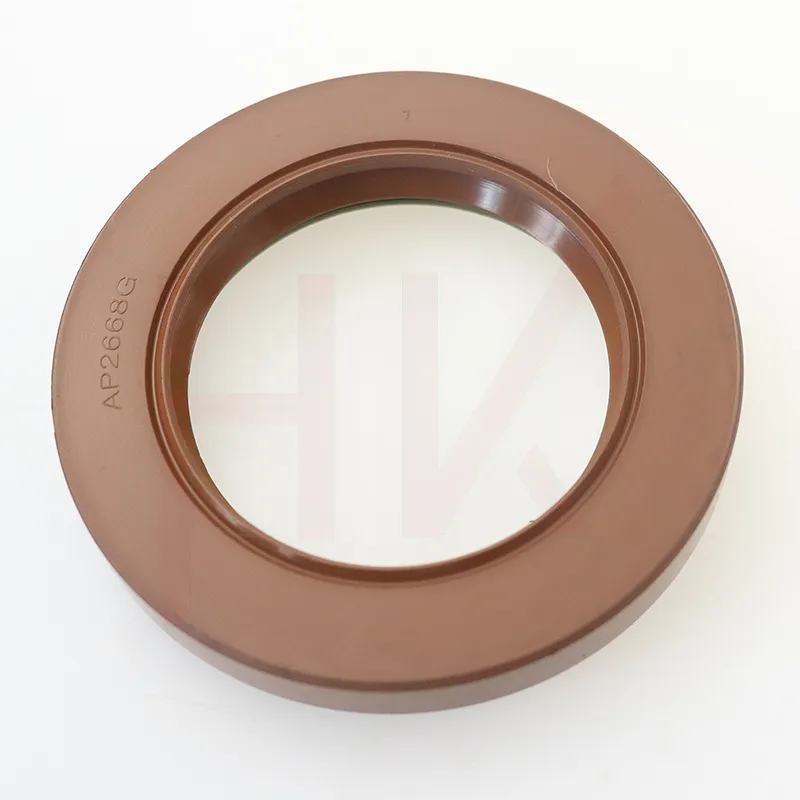Nov . 22, 2024 02:50 Back to list
dust seal vs oil seal
Dust Seal vs. Oil Seal Understanding Their Differences and Applications
When it comes to machinery and equipment maintenance, understanding the roles and functionalities of various sealing components is crucial. Among these components, dust seals and oil seals play vital roles in ensuring the longevity and efficiency of mechanical systems. While they may appear similar at first glance, each seal has distinct characteristics and applications that make them suitable for specific purposes.
What is a Dust Seal?
A dust seal is primarily designed to prevent the ingress of dust, dirt, and other abrasive particles into machinery and equipment. These seals are usually employed in environments where exposure to particulate matter is high, such as construction sites, agriculture, and outdoor machinery. Dust seals are typically made from materials that resist wear and punctures, enabling them to protect critical components from contamination.
One of the most common applications of dust seals is in the automotive sector. They are often found on wheel bearings, suspension systems, and drivetrain components. By keeping dirt and other contaminants out, dust seals help to maintain the lubricated environment necessary for optimal performance and longevity of mechanical parts.
What is an Oil Seal?
On the other hand, an oil seal is specifically designed to contain lubricants and prevent oil leakage from machinery. Oil seals are crucial in maintaining the necessary lubrication within engines, gearboxes, and other mechanical devices. They typically have a lip that creates a tight seal against a rotating shaft, thereby preventing oil from escaping and protecting against external contaminants.
Oil seals are manufactured using materials that can withstand high temperatures and pressure, making them ideal for applications such as automotive engines, pumps, and hydraulic systems. The efficient functioning of oil seals is essential for reducing friction, minimizing wear and tear, and ensuring the mechanical system operates smoothly.
Key Differences
dust seal vs oil seal

1. Purpose The primary objective of a dust seal is to keep out particulates, while an oil seal's main function is to retain lubricants and prevent leaks.
2. Design Dust seals often have a more robust, flexible construction to accommodate the presence of particulates. In contrast, oil seals are designed with a lip that sits tightly against the shaft, maximizing their ability to contain liquid and prevent leakage.
3. Materials Both seals can be made from various materials, but oil seals are typically constructed from elastomers or rubber compounds that can withstand oil and high temperatures, while dust seals may use reinforced plastic or rubber mixtures designed to resist abrasion.
4. Application Environment Dust seals are more commonly used in environments with high exposure to dirt and dust, while oil seals are crucial in environments where machinery utilizes lubricants.
Applications in Industry
In industrial applications, the choice between a dust seal and an oil seal often comes down to the specific requirements of the machinery in question. For example, in hydraulic systems, oil seals are vital to ensuring that hydraulic fluids do not leak, which can lead to equipment failure and costly repairs. Meanwhile, equipment used in dusty environments, like agricultural machinery, benefits significantly from the protective features of dust seals.
In many cases, machines will utilize both types of seals to ensure comprehensive protection. For instance, a hydraulic cylinder may have an oil seal on the inside to keep hydraulic fluid in and a dust seal on the outside to prevent dirt from contaminating the internal components.
Conclusion
Understanding the differences between dust seals and oil seals is essential for proper maintenance and operation of mechanical systems. Each type of seal serves a specific purpose and plays a critical role in ensuring the efficiency and longevity of machinery. By selecting the appropriate sealing solution based on the application environment and the function required, one can enhance equipment performance, reduce downtime, and ultimately save on maintenance costs. As technology continues to evolve, so too will the designs and materials used in these vital sealing components, leading to even greater improvements in machinery reliability and efficiency.
-
TCN Oil Seal Metal Ring Reinforcement for Heavy Machinery
NewsJul.25,2025
-
Rotary Lip Seal Spring-Loaded Design for High-Speed Applications
NewsJul.25,2025
-
Hydraulic Cylinder Seals Polyurethane Material for High-Impact Jobs
NewsJul.25,2025
-
High Pressure Oil Seal Polyurethane Coating Wear Resistance
NewsJul.25,2025
-
Dust Proof Seal Double Lip Design for Construction Equipment
NewsJul.25,2025
-
Hub Seal Polyurethane Wear Resistance in Agricultural Vehicles
NewsJul.25,2025
-
The Trans-formative Journey of Wheel Hub Oil Seals
NewsJun.06,2025
Products categories
















